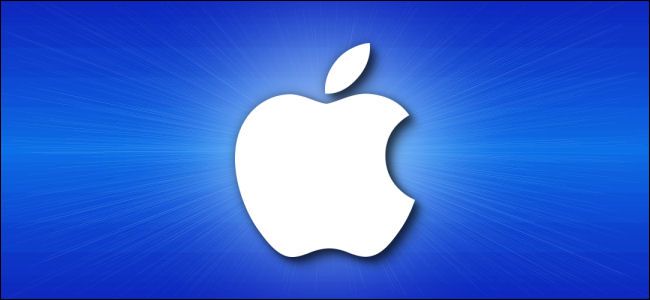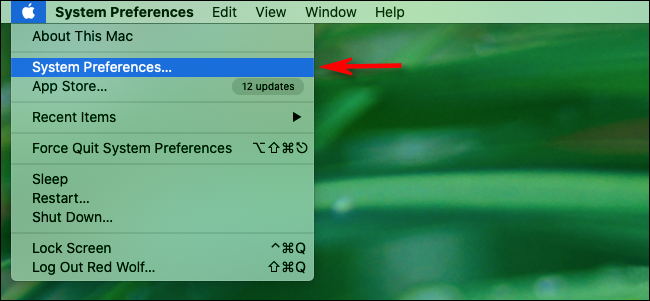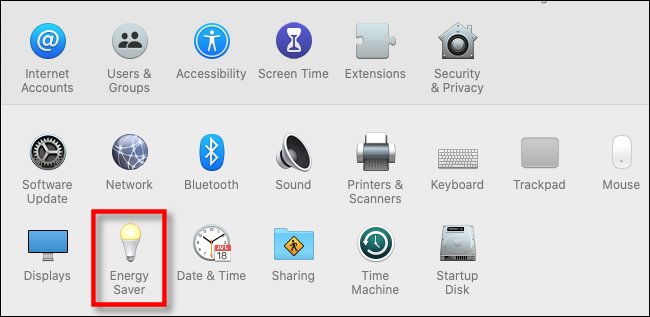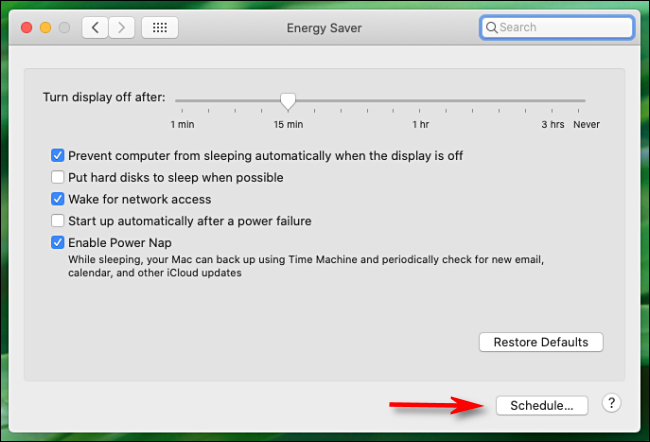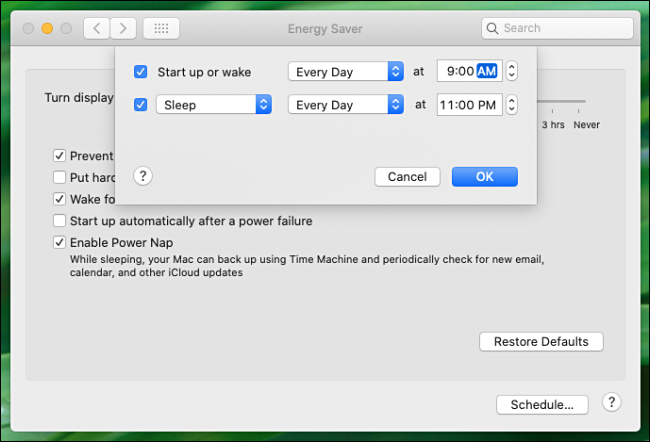Quick Links
If you shut down your Mac before you go to bed or leave work, but don't enjoy waiting for it to boot up each day, you can schedule it to power-On at a specific time. Then, your Mac will always be ready to go before you even sit down.
To get started, click the Apple logo at the upper left, and then click "System Preferences."
Click "Energy Saver" if you're running macOS 10.15 Catalina or older. On macOS 11 Big Sur or later, click "Battery."
On Catalina or older, click "Schedule" at the bottom of the "Energy Saver" menu. On Big Sur or newer, click "Schedule" in the side menu.
The window that appears next will look different on Catalina (macOS 10.15) and Big Sur (macOS 11), but the options are basically the same.
To schedule a start-up time, select the checkbox next to "Start Up or Wake," and then select a day and time. In the drop-down menu, you can select "Weekends," "Weekdays," "Every Day," or a specific day of the week.
Just below that, you can also schedule a time for your Mac to either sleep, shut down, or restart every day. If you'd like to set that, too, click the checkbox on the row below the start-up options, and select a day and time.
When you're done, click "OK" (or "Apply" on Big Sur), and then close "System Preferences."
If you have a MacBook, the start-up time you just scheduled will only work when the unit is plugged into a wall adapter or charger. This prevents your MacBook from waking when you don't want it to and draining the battery.
More Mac Startup Automation Tips
If you want to save even more time, you can enable auto-login in the "Users and Groups" menu. Then, you'll no longer have to select your account and type your password each day. However, keep in mind this isn't a good idea if your Mac is in a location where others could use it.
You'll save even more time if your favorite apps are already running when you sit down to your Mac. You can configure these to open as soon as a log-in occurs in the "Login Items" section in the "Users and Groups" menu.
Once you have everything configured, you'll be able to get right to work every day!

